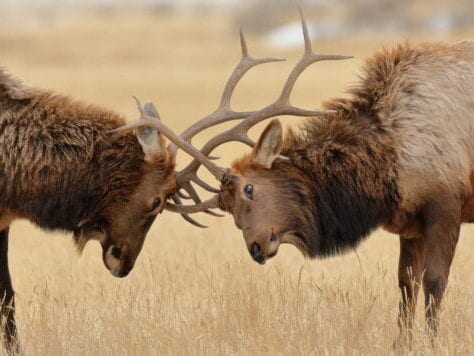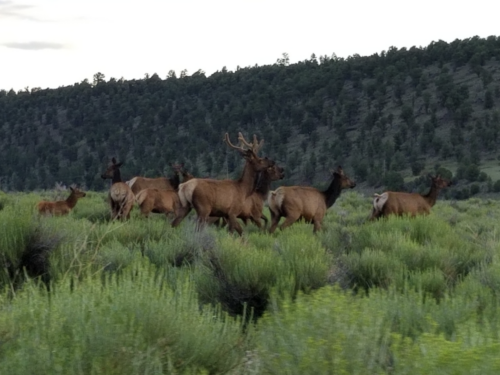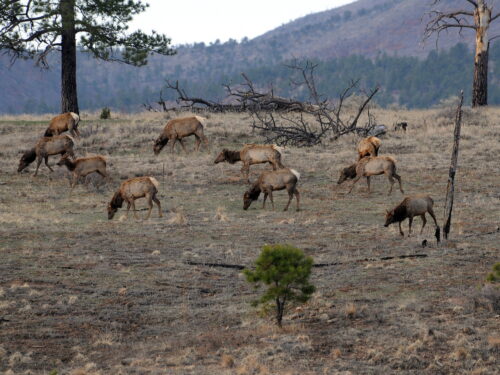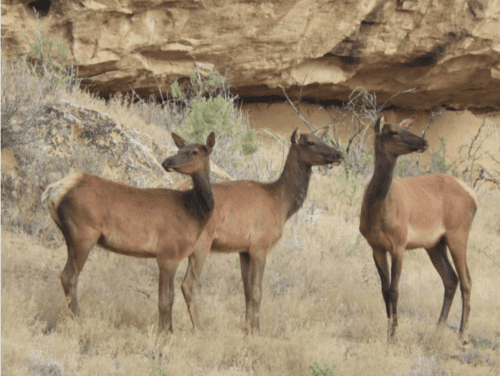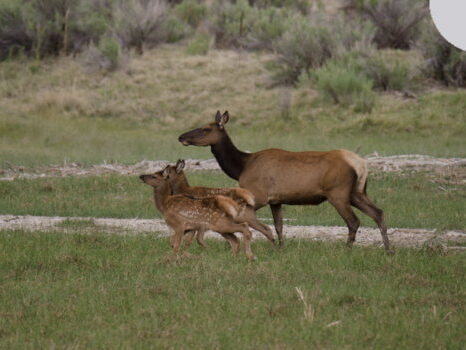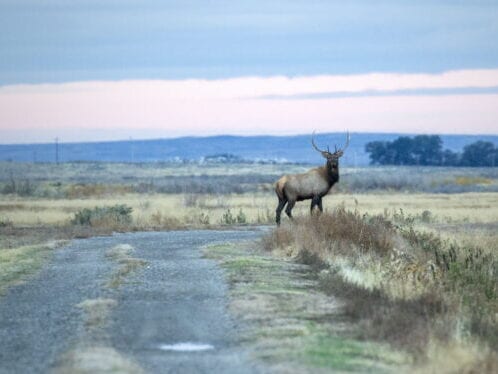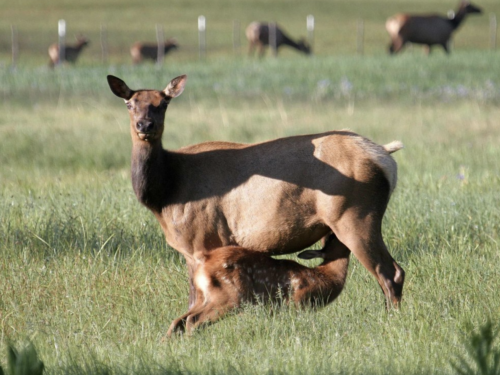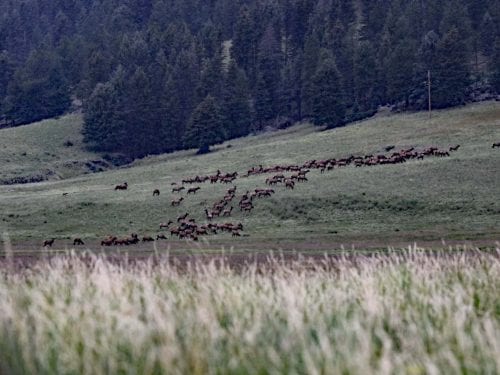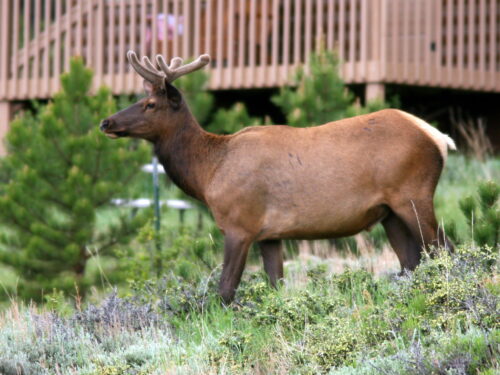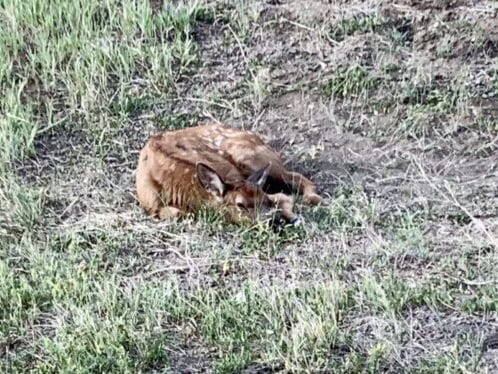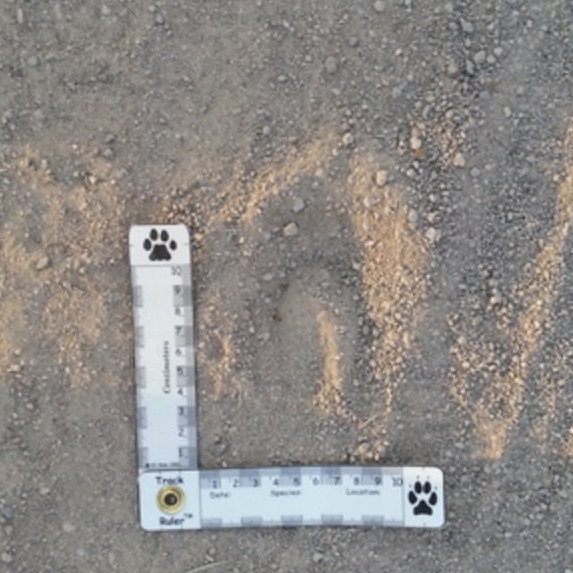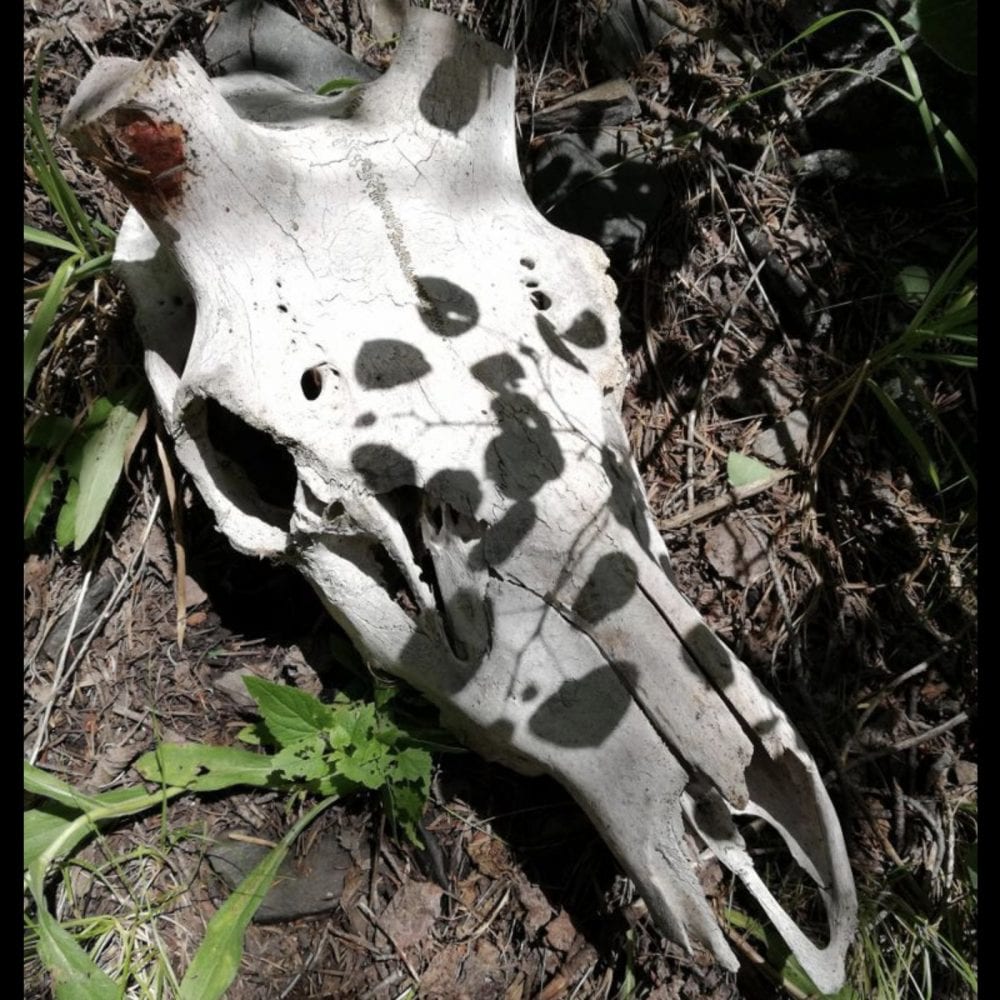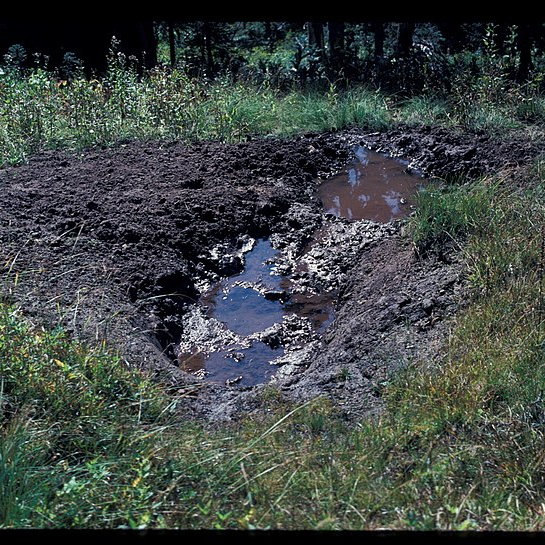Elk
Also Know As: Wapiti
Scientific Name: Cervus canadensis
Type: Mammal
Family: Cervidae ( Deer)
Size: 85 to 96 inches long
Weight: 500 to 700 pounds
Life Span: 10 to 13 years
Physical Description
An elk is at type of deer and one of the largest mammals in North America. Males, which are larger and heavier than females, can be up to 8 feet from nose to tail and sport a large set of antlers for most of the year.
Both sexes range in overall color from pale gray to tan to brown with with darker brown areas depending on the season. Elk have a thick body, short tail, slender legs, large ears, and a buff-colored rump. They also have a shaggy mane that hangs from the neck to the chest.
Range and Habitat
Elk were once found throughout Europe, Asia, and North America. However, due to extensive hunting, their range has become very limited. Eurasian elk are confined to a few protected areas. In North America, large populations of elk are only found in the western part of the continent from Canada south through New Mexico with small populations of reintroduced elk found in other areas.
Elk prefer open woodlands and can be found in coniferous-hardwood forests, forest edges, and alpine meadows. They are often found in mountainous areas, living at high elevations in summer and down in the valleys in winter.
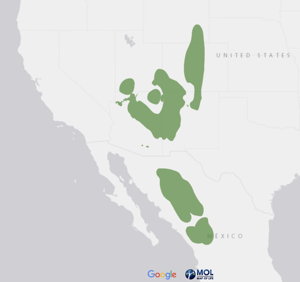
Diet
Elk primarily graze on vegetation growing at ground level such as grasses and sedges. They particularly like wildflowers and clover. During winter they browse more on bark and the woody growth of a variety of trees.
As a ruminant, similar to a cow, an elk regurgitates its food and chews it again to add in digestion.
Behavior and Social Life
Elk are social animals, living in summer herds or gangs with as many as several hundred individuals and lead by a single female. They mostly feed in the mornings and evenings, resting in sheltered areas in between feedings.
Elk use their large size, herd behavior, and sharp hooves to protect themselves from predators.
Elk have keen senses (smell, hearing, and vision) and use them all to communicate with other elk. Calves bleat, cows bark and squeal, and bulls make a low-pitched bulging sound that can be heard for miles.
Male elk have large antlers made of bones that are attached to their skull. Elk grow new antlers each spring. As the antlers grow they are covered with a layer of fuzzy skin called velvet. The velvet carries all of the nutrients that the antlers need to grow. Come fall, bull elk use smaller trees to remove the velvet from their antlers. Signs of such activity is called a “rub”. Elk shed their antlers each year sometime in mid-December.
As winter approaches, both male and female elk grow a thicker coat of hair to insulate them during the cold weather. In spring, they shed the extra fur, sometimes rubbing against trees to help in its removal.
Life Cycle
Bulls are only territorial during the mating season (late September and early October) and are otherwise not aggressive toward other elk. However, during the fall rut, males fight with other males to establish dominance. The winner gets the chance to form and defend a harem of around 20 females with which they can mate. The males attract females by bugling. In addition, they will urinate in a muddy area known as a “wallow” and roll around in it to pick up the scent.
In spring, males and females separate, with the females forming nursery groups until the babies are born. Each female will have a single calf that has spots for camouflage and can stand by the time it is a few minutes old. Newborns have almost no scent and remain hidden for the first few weeks so they do not attract predators. They will stay with their mothers for almost a year until the next group of calves are born.
Male and Female Elk
Male Elk Bulging
Elk Calf Calling
Title
Ecological Role
The ecological role of elk is as a prey species. While healthy adult elk are rarely attacked, older or sick adults and calves are hunted by mountain lions, bears, coyotes, and bobcats.
In addition, elk are important for their impact on the plant communities in which they live through their grazing and browsing. They have been reintroduced into several national wildlife reserves to help restore the grass prairie ecosystem and limit tree overgrowth. In addition, elk are thought to be responsible for the decline of aspen groves in some areas due to their fondness for aspen shoots.
Interactions With Humans
Early settlers and Native Americans originally valued elk as a food source as well as for their fur, hide, and antlers. Today they are still hunted, and in some areas, raised on ranches. However, they now also play an important role in attracting tourism to parks and reserves.
Elk are considered pests by many farmers. They can cause damage to trees and crops and may contribute to the spread of some diseases to livestock.
Interesting Facts
- There are four subspecies of elk living in North America; the local subspecies is the Rocky Mountain.
- The Rocky Mountain subspecies has the largest antlers of all the subspecies.
- The Native American word for “elk” is “wapiti”, meaning light-colored deer.
- In Europe “elk” are called “red deer”.
- Elk are one of the largest deer species in the world.
- They are the loudest member of the deer family.
- Elk prefer the cold.
- Elk meat is leaner and higher in protein than chicken or beef.
- The velvet shed from elk antlers is valued for its medicinal properties.
- Elk ankle bones make cracking noises when they walk and thought to be a way for elk to communicate from behind.
- A bull elk can run up to 40 miles/hour.
- An elk herd can occupy a territory as large as 600 square miles.
- The bugle sound that males make is created using not only their mouths and lips but also their nostrils.

